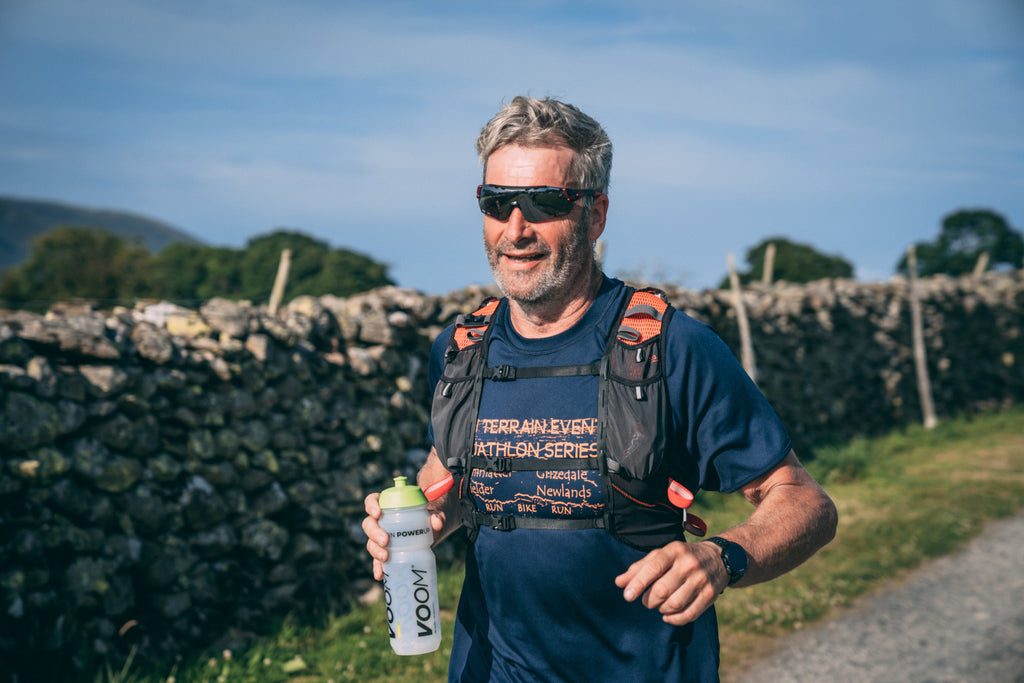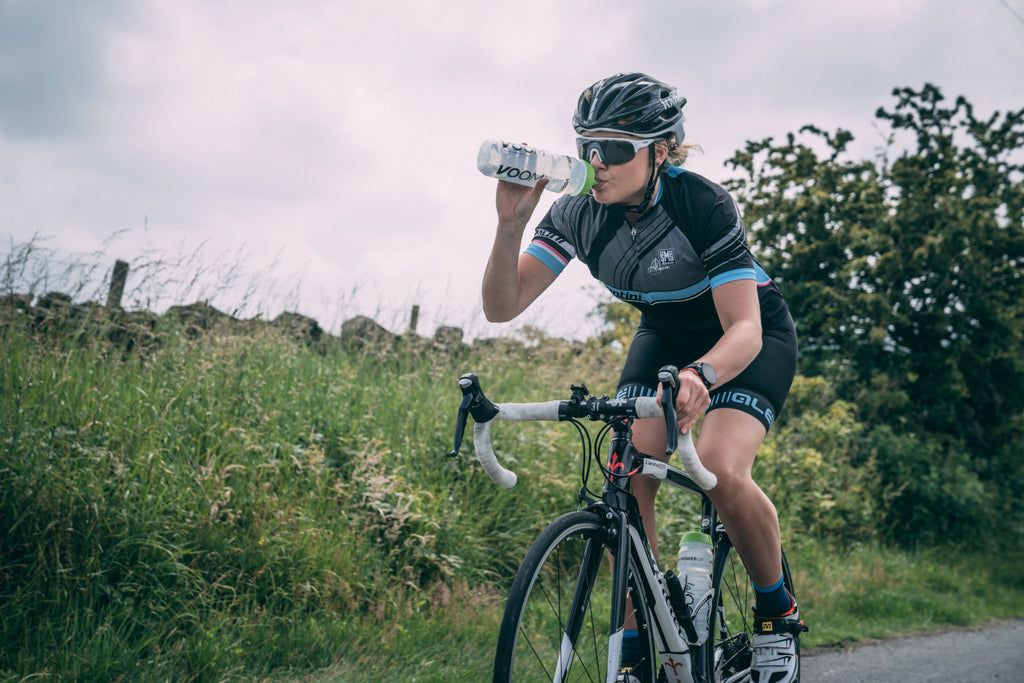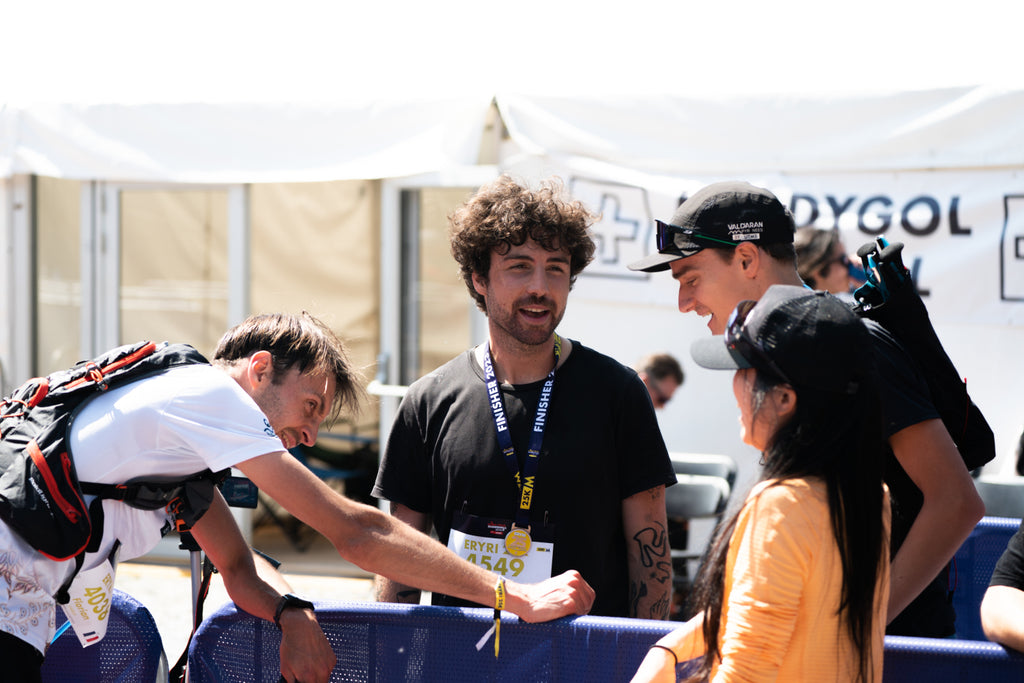Racing in the heat provides an added challenge to the body’s homeostasis (maintenance of consistent internal conditions) so check out our top tips to make sure you can handle the heat for your event.
Don’t start your event dehydrated
Don’t put yourself at an instant disadvantage by starting your event dehydrated. Most people will typically dehydrate through the night, already putting themselves on the back foot come race morning. One of the easiest ways to help ensure good hydration on the start line is by considering your travel to the event.
Many will sit in the car for an hour or two, maybe even three hours travelling to their event, and don’t even take a bottle with them, dehydrating all the way to the start line. Don’t fall foul of this and try to calculate your travel time and plan so that you have access to 3-500ml of fluid per hour during the journey. Sip your way through the fluid - you may even want to add electrolytes if it’s warm.

Start the race well-hydrated!
Even after travelling, to top up your hydration status prior to starting, aim to sip 500ml of electrolyte drink in the 1 - 2 hours before you start. Even if you’re very local to the start line and haven’t had a long journey make sure you get some fluids (ideally electrolytes) in on race morning - it can be easy to forget this in the buzz of the pre-event period! This may include an element of sodium loading where you consume slightly more sodium in the day or two before the event, knowing that you’re going to be losing sodium during the race.
Consume enough fluid during the race
As you exercise, the body sweats in order to cool itself, which unfortunately depletes the body’s water balance - losses that need replacing. In warm conditions aim to take on 500 - 800ml of fluid per hour, but potentially even up to 1000ml per hour in very hot conditions. The requirement varies due to individual sweat rates and drinking preferences, and depending on the duration of your event, the longer you’re out there the more you’ll typically need to drink per hour. In cooler conditions this fluid can be water but as things heat up we’d definitely recommend an electrolyte drink; sometimes water is simply not enough to maintain hydration with the stress you’re putting your body under when competing in hot weather.

Understand Tonicity
Everyone’s heard of isotonic drinks, and that’s what we need for a race, right? Well, not necessarily!
An isotonic drink has a similar concentration of salts and sugar as blood, meaning it contains some element of energy, and the fluid can be absorbed at a moderate speed into the bloodstream.
A hypotonic drink actually has a lower concentration of salt and sugar than blood, and this drives fluid uptake in the body meaning water is transported from the stomach and small intestine into the blood and the body’s water pool, even more rapidly. This is ideal for a hydration drink, such as VOOM Hydrate Smart which is a hypotonic drink and can hydrate up to 40% faster.
The third type of tonicity of drink is a hypertonic drink with a higher concentration of salts and sugars than blood a hypertonic drink can actually cause movement of water out of the cells and into the stomach to dilute the sugars, this means these are the slowest to hydrate the body. Most high energy drinks are hypertonic, so don’t hydrate as quickly as pure hydration drinks, but hypertonic drinks can be most useful for post-workout.
Take on Electrolytes
Water alone is not enough! Electrolytes (often called salts) are lost in sweat and they play important roles in maintaining fluid balance, nervous function, muscle contractions and more functions besides. The key electrolytes are sodium, calcium, potassium, magnesium and chloride, and you can learn more about the specific functions of each, as well as the importance of electrolytes here.
In hotter conditions the body's sweat rate increases, losing electrolytes faster, and depletion in electrolytes can lead to cramps, headaches and symptoms that spell disaster for your sporting performance. Additionally, electrolytes speed up the rate of water absorption from the intestine which means faster hydration, and minimise the time the water sits in the stomach where it can risk GI discomfort.
A 500ml serving of VOOM Hydrate Smart formula contains 460mg of full spectrum electrolytes, which are designed to match the natural electrolyte balance in your sweat. We recommend 1 to 2 servings per hour when racing in hot conditions. You can also boost electrolyte intake whilst taking on energy with 100mg of electrolytes in the Pocket Rocket Electro Energy bar.
Watch out for symptoms of dehydration
Many of you already know that by the time you feel thirsty it usually means you’re already dehydrated by 500 - 750ml of fluid, but what other signs of dehydration can you watch out for. A dry mouth can be a symptom, as can light-headedness and general fatigue. Urinating less frequently, muscle cramps, increases in heart rate and changes in blood pressure and body temperature can also signify dehydration.

Don’t overhydrate (yes that's a thing)
Drinking too much water can actually be really dangerous, and given the well-known negative effects of dehydration many athletes are actually borderline over-hydrated before starting their event. Hyponatremia occurs when too much water is consumed in a short time and the body’s electrolyte levels become diluted with potentially fatal effects. Good hydration is all about fluid balance, so this means drinking enough fluids (and electrolytes) without overdoing it. Symptoms of hyponatremia include headaches, cramps, sickness and general lethargy.
Use Water to cool yourself
Without being dramatic, in particularly hot conditions it can be worth tipping cool water over yourself / your head when the opportunity arises, such as when passing an aid station or a natural stream. This can reduce the temperature of the skin and research has shown it can reduce perception of effort, so a quick swill of water over the head can actually help you perform in the heat.

































































